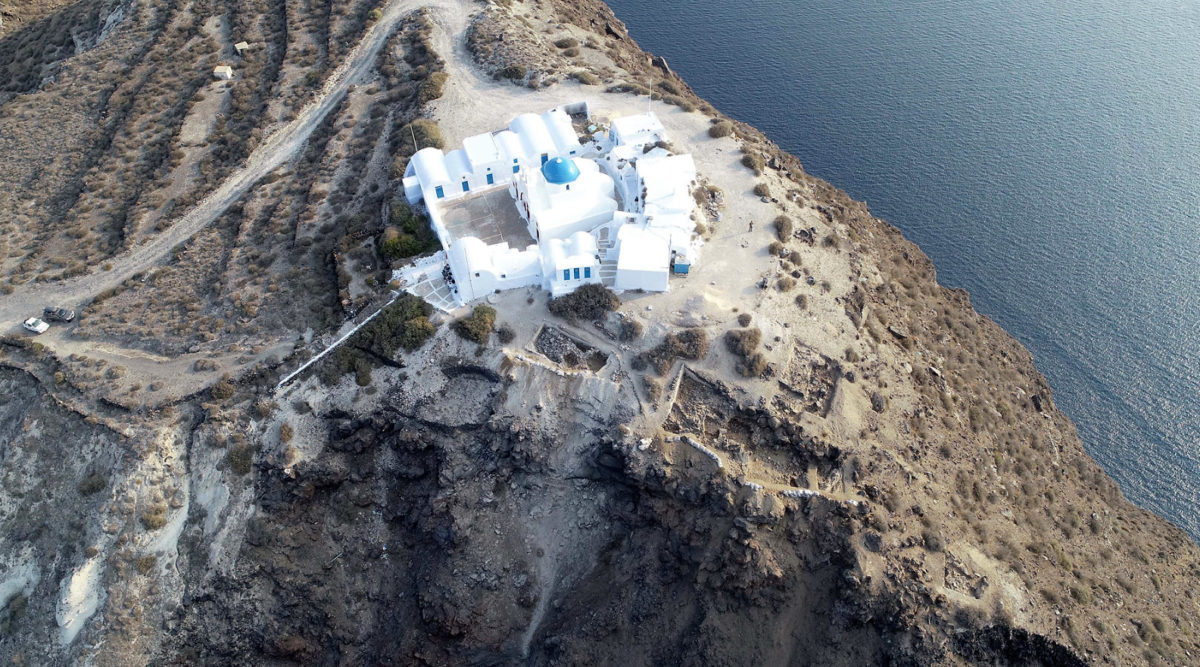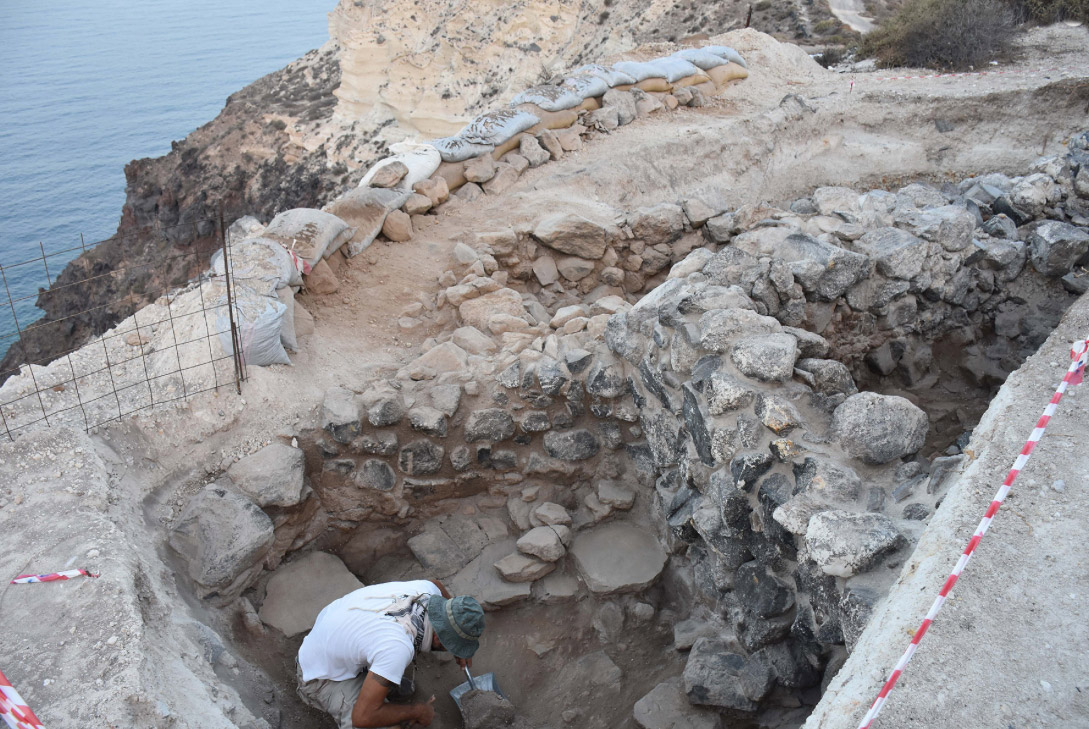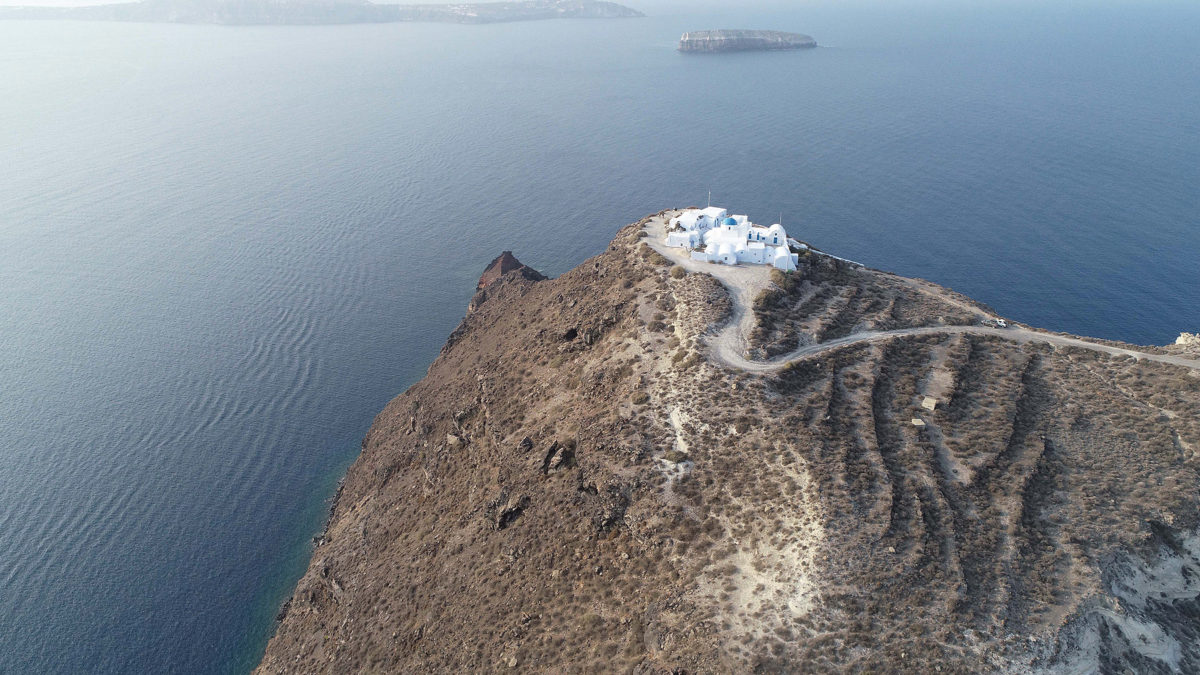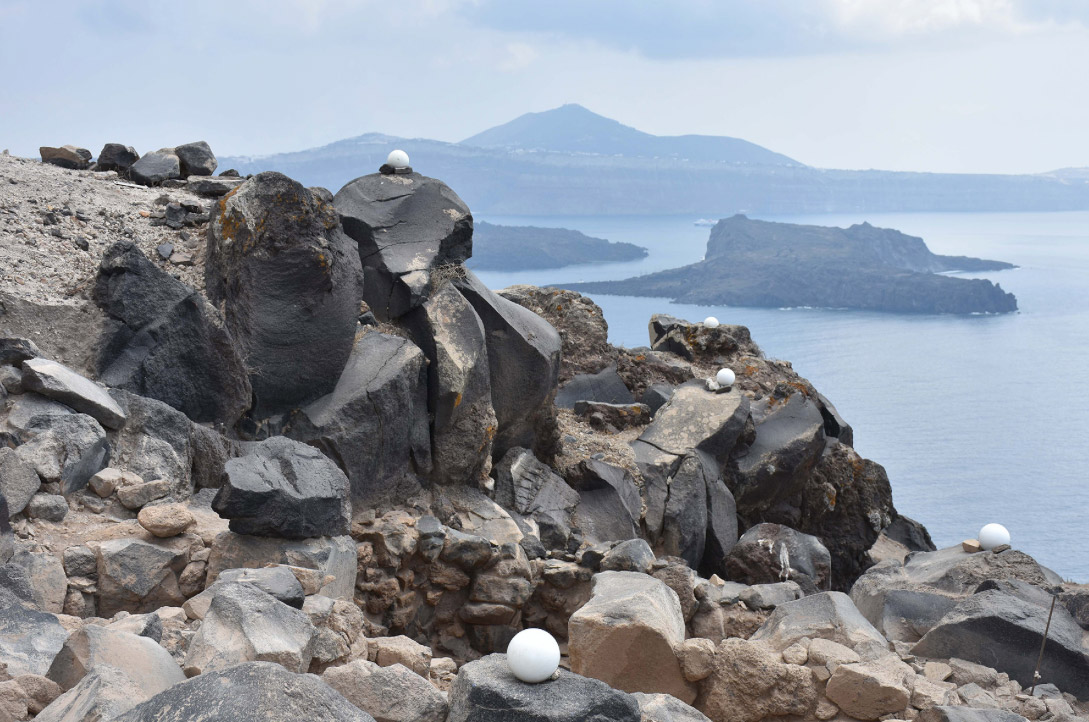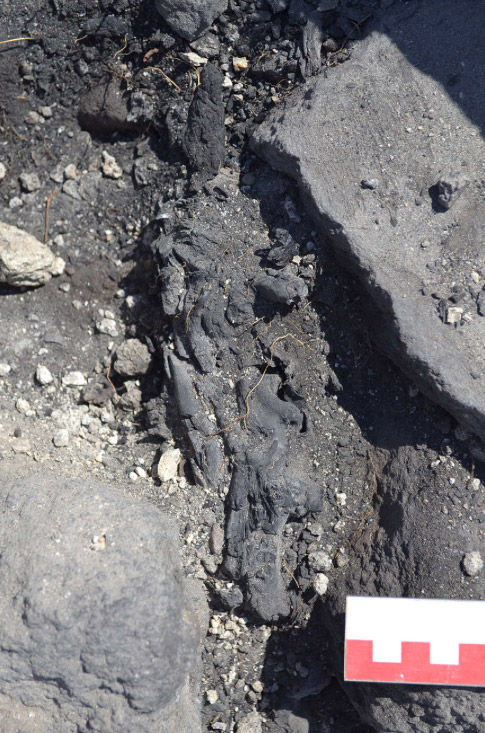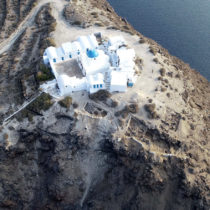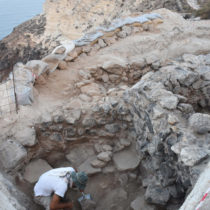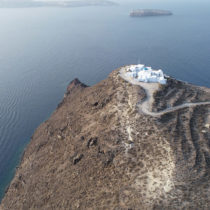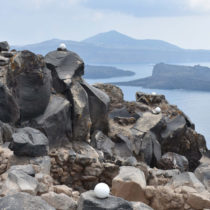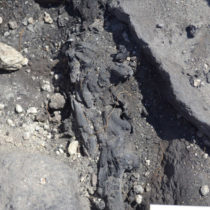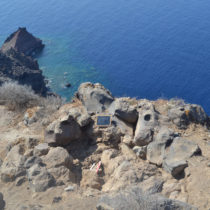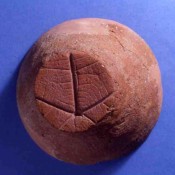Excavations continued this year of the prehistoric settlement at the site of “Koimisi Therasias”. The settlement that takes up the summit and upper slopes of an impressive hill on the south side of today’s Therasia on the brow of the crater/caldera before it erupted, dates from the Early and Middle Bronze Age and offers important data on the Thera-Therasia complex during the earlier phases of the Bronze Age.
The excavation trenches were opened this year on the south side of the Koimisi hill, on the same level as other buildings of the settlement located in previous periods, i.e. the large oval building and the smaller constructions ingenuously nesting in the recesses of the volcanic rocks. The excavation focused on the spot where during geophysical research possible architectural remains had been located encased in layers of the Minoan eruption.
Indeed, from the start of the excavation, very strong, carefully constructed walls appeared from among the ash and pumice stone, one of which was about 7 metres long. The most important excavated area reached a depth of 2 meters and the discovery of a bench that ran all the length of the south wall gave interesting data on the area’s use. The overall appearance of this construction and its finds is considerably different from those of the settlement known till now. The big linear walls and the relatively strong presence of Middle Cycladic ceramics in undisturbed layers suggest that most probably we are broadly within the Middle Cycladic period (circa 2000- 1700 BC) which perhaps incorporates earlier strong constructions of the Middle Cycladic era. It is still too early to guess the character of the walls, whether, that is, they were part of a defence enclosure or part of a house.
Another important work was the clarification of the layers and the floors of a terrace in approximately the centre of the excavated settlement. The presence of the Early Cycladic II period is obvious, with the main phase of the settlement being the Kastri in the late Early Cycladic II and III. There is then the Middle Cycladic period, a phase that is restricted in terms of space but architecturally is quite monumental and which clearly emerged in this year’s excavations.
Thus, in terms of its chronology and type, this settlement can be included in the corresponding ones of the Aegean; mainly that at Akrotiri, as well as those at Skarkos on Ios and Daskaleio on Keros, while also satisfactorily proving that these cultures were present on Therasia which was joined to Thera at the period being studied. Another important success of the research on Therasia was the discovery and dating of olive wood from the last stratigraphic phase prior to the volcano’s eruption. The radiochronology and dendrochronology carried out by R. Hodgins and Ch. Pearson (University of Arizona, Τucson) by applying a new calibration curve, suggests the absolute dating of the Therasia wood as being the early 16th c. BC and consequently the dating of the Minoan eruption as being a few decades later than what was believed till now by supporters of absolute dating.
The excavation is being conducted with the supervision of K. Sbonia (Ionian University), I. Tzachili (University of Crete) and M. Efstathiou (Ephorate of Antiquities of the Cyclades) with the cooperation of an interdisciplinary team of researchers and the support of the Thera Municipality, of INSTAP and the Secretariat General for the Aegean and Island Policy.
